Black and white art history begins in a primordial cavern flickering with firelight, the first artist lifts a charcoal-blackened hand to stone. A line emerges—ebony on pale limestone—the world’s earliest story told in black and white. From Paleolithic cave paintings, where hunters etched shadows of bison and horse with burnt wood, the history of black and white art begins as a dialogue between darkness and illumination. With them, early humans conjured silhouetted herds and ghostly handprints that still whisper across millennia.
In that dawning moment of creativity, monochrome art history was born from necessity and imagination—the stark contrast of night’s pigment on stone capturing form and myth when color was scarce. Darkness and light being the first pigments offered to mankind by nature. Their limited palette carrying unlimited possibility.
Each stroke of black on a pale rock wall was an act of endurance — ancient black and white art that endures in our collective memory to this day. These early images, simple yet haunting, set the stage for a journey through time where art would repeatedly return to the power of monochrome expression.
Such earliest artworks show that before there was color, there were shadows. The cave artist’s charcoal line was not mere outline but a bridge between worlds—the dark of the cave and the bright life outside. This poetic duality of black and white, of void and light, became a foundational theme in art’s evolution.
Key Takeaways
From ancient caves to modern canvases, monochrome art distills the visual world into a potent dance of shadow and illumination, proving that the absence of color can amplify meaning, sharpen emotion, and evoke the essence of form itself.
Black and white have long served as visual poetry—symbolic carriers of dualities like life and death, truth and oblivion—empowering artists across millennia to transcend mere representation and reveal deeper intellectual, spiritual, and emotional truths.
Masters such as Leonardo da Vinci and Albrecht Dürer wielded the stark power of chiaroscuro and monochrome engraving to craft haunting, timeless narratives, affirming that restricting palettes demands greater artistic mastery and can yield profound emotional resonance.
In modernity, visionaries like Picasso, Malevich, and Franz Kline used black and white to provoke, confront, and innovate, transforming stark simplicity into revolutionary statements that resonate with sociopolitical intensity and philosophical depth.
Through photography, monochrome has imprinted itself into our cultural memory—capturing history's decisive moments in eternal shades of gray, articulating humanity’s collective struggles and triumphs, and enduring as a timeless, universal language that continues to enthrall the eye and stir the soul.
Ancient Egypt
 As civilizations rose, they, too, found potency in this pared-down palette. Ancient Egypt, for instance, recorded its civilization’s heartbeat in black ink on creamy papyrus scrolls. Scribes and artisans of the Nile drew gods and pharaohs with carbon-black lines, believing the written word itself was a sacred art form. In tombs and temples, hieroglyphs of ebony hue march across ivory backgrounds, the ancient Egyptian black and white art of text and image intertwined.
As civilizations rose, they, too, found potency in this pared-down palette. Ancient Egypt, for instance, recorded its civilization’s heartbeat in black ink on creamy papyrus scrolls. Scribes and artisans of the Nile drew gods and pharaohs with carbon-black lines, believing the written word itself was a sacred art form. In tombs and temples, hieroglyphs of ebony hue march across ivory backgrounds, the ancient Egyptian black and white art of text and image intertwined.
The choice of black ink was practical—soot and ground minerals mixed into a durable medium—but it was also symbolic. Black (kem) in Egyptian culture signified both the fertile soil of the Nile and the god of the afterlife; white (hedj) denoted purity and omnipotence. Thus even in the brisk lines of hieroglyphs, a cultural symbolism of black and white emerged: life and death, rebirth and eternity, inscribed in two tones for the ages.
Ancient Greece
 The Greeks had their own monochrome marvels. Imagine an Attic vase, its terracotta surface adorned with figures rendered in lustrous black slip. Against the reddish clay, black forms of heroes and gods spring to life, a technique known as black-figure painting. On a 6th-century amphora, Achilles and Ajax crouch over a board game, their forms entirely midnight-black silhouettes carved by negative space – an artistic game of shadow and light as sophisticated as any later chiaroscuro.
The Greeks had their own monochrome marvels. Imagine an Attic vase, its terracotta surface adorned with figures rendered in lustrous black slip. Against the reddish clay, black forms of heroes and gods spring to life, a technique known as black-figure painting. On a 6th-century amphora, Achilles and Ajax crouch over a board game, their forms entirely midnight-black silhouettes carved by negative space – an artistic game of shadow and light as sophisticated as any later chiaroscuro.
The ancient Greek black-figure pottery, though technically two-tone (black on orange clay), embodies the essence of black-and-white artistry: the figure-ground contrast that focuses our eye on pure form. Greek potters later reversed the scheme with red-figure ware (figures in clay color on a painted black background), but the drama remained. Without a rainbow of pigments, the potter had to rely on shape, line, and the bold contrast of black and white design to tell heroic tales.
Meanwhile, Greek sculptors carved pristine marble statues that we now see as white, though they were once painted – an irony of history that leaves us modern viewers with an unintended monochrome of weathered stone. Romans, too, created intricate black and white mosaics, laying dark basalt and white marble tesserae in geometric floors that still entrance us with their stark, hypnotic patterns.
Across the ancient world, artists discovered that limiting color could unleash a new level of visual clarity. Stripping away the spectrum allowed form itself to speak louder. In these early chapters of art, black and white were not seen as lacking, but rather as foundational art elements – the ink and parchment of visual civilization.
Chiaroscuro: Painting with Shadow and Light in the Renaissance
As the medieval world gave way to the Renaissance’s golden dawn, artists rediscovered the classical lessons of form and shadow. Renaissance chiaroscuro painting – literally “light-dark” in Italian – emerged as a revolutionary technique, proving that color was not the only path to realism and emotional depth.
Lack of colour does not mean lack of meaning; by contrast, its result is often conceptual richness. By reducing the spectrum, artists across the Renaissance found they could convey new intellectual and spiritual dimensions, letting shadow and light carry the storytelling. Often used to guide the beholder’s gaze and focus the mind beyond narrative detail. Lacking the seduction of color, these works invited viewers to contemplate form, composition, and meaning in a purer way. It’s a visual “cleansing of the palette” that sharpens perception. Proving that monochrome is not a limitation but a liberation—a way to see the world anew in pure form and value.
Leonardo da Vinci
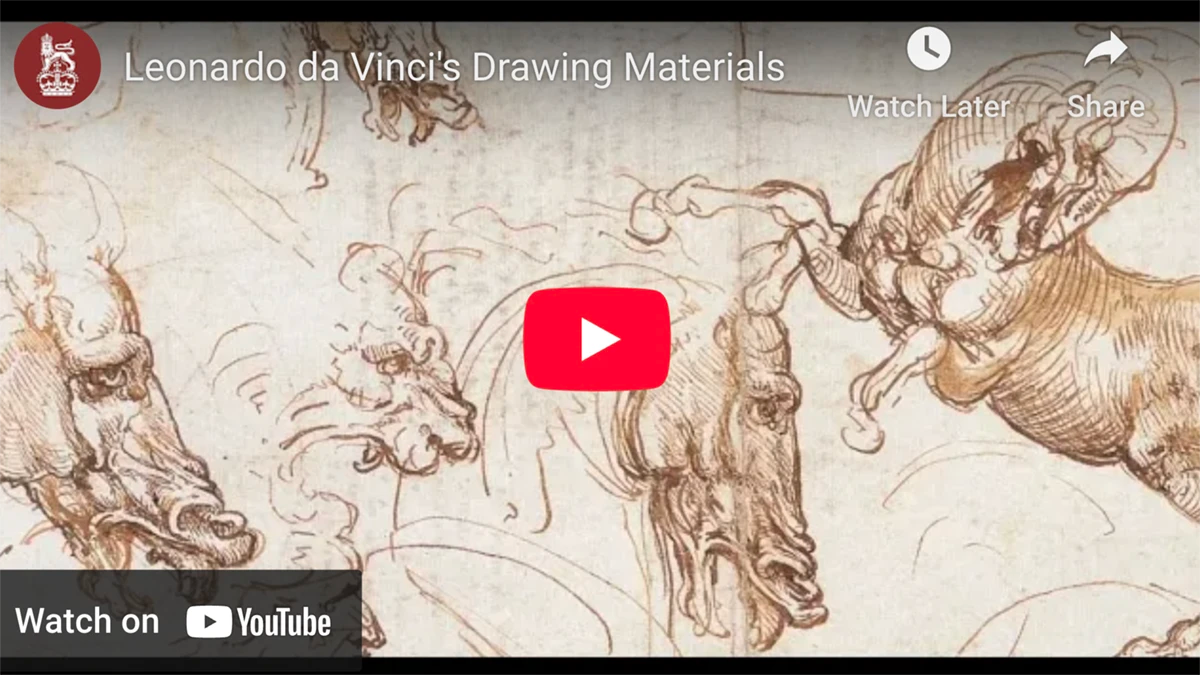 Supreme visionary of the High Renaissance, Leonardo often stepped away from vibrant paint and instead embraced drawing and shading to explore reality’s contours. In his notebooks he urged students to practice in monochrome first, writing that a painter “should first practice drawing black and white, as this gives the foundation of form.”
Supreme visionary of the High Renaissance, Leonardo often stepped away from vibrant paint and instead embraced drawing and shading to explore reality’s contours. In his notebooks he urged students to practice in monochrome first, writing that a painter “should first practice drawing black and white, as this gives the foundation of form.”
Leonardo’s own sketches in pen, ink, and silverpoint are marvels of Renaissance chiaroscuro technique: drapery studies where folds of cloth emerge through delicate gradients of wash, or the famed chiaroscuro drawing “The Virgin and Child with St. Anne and John the Baptist,” in which figures loom in smoky shadow on toned paper.
He mastered the art of shadow – sfumato and chiaroscuro – using only shades of gray to model anatomy and atmosphere. In works like The Last Supper, he orchestrated a high drama of light radiating from Christ against a dusk of surrounding disciples; though that masterpiece is in muted color, its impact relies on a black-white value structure that guides the eye to the sacred center.
To Leonardo, black and white were the keys to realistic depth: with them he created the illusion of three dimensions on a two-dimensional surface, bringing depth and realism to his art.
Albrecht Dürer
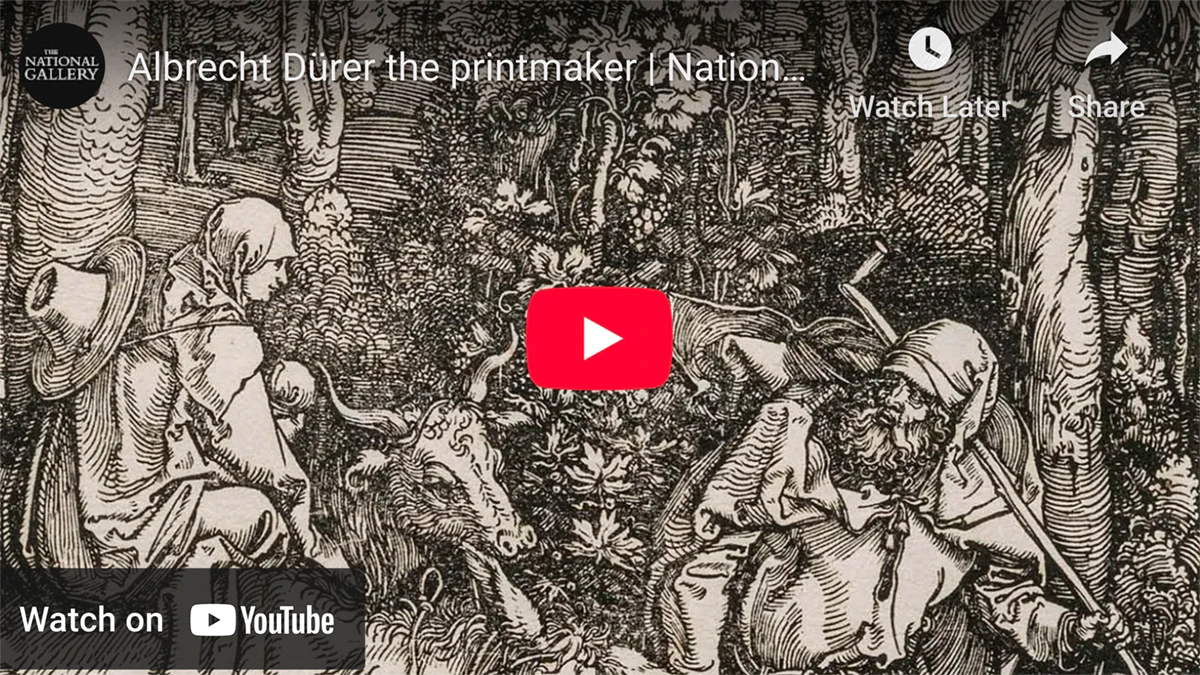 In Northern Europe, artists took monochrome to astounding heights of detail. Enter Albrecht Dürer, the German master engraver, who in 1514 created an image so rich in symbolic meaning and fine gradations of tone that it still captivates scholars: Melencolia I. This engraving exists entirely in black ink lines on white paper, yet it conjures up a melancholic angel bathed in spectral light, surrounded by a clutter of symbolic objects. With only cross-hatched lines and the whitespace between them, Dürer produced a world of shimmering gray tones—the print equivalent of a full tonal painting.
In Northern Europe, artists took monochrome to astounding heights of detail. Enter Albrecht Dürer, the German master engraver, who in 1514 created an image so rich in symbolic meaning and fine gradations of tone that it still captivates scholars: Melencolia I. This engraving exists entirely in black ink lines on white paper, yet it conjures up a melancholic angel bathed in spectral light, surrounded by a clutter of symbolic objects. With only cross-hatched lines and the whitespace between them, Dürer produced a world of shimmering gray tones—the print equivalent of a full tonal painting.
Other engravings like Knight, Death, and the Devil showcase how Renaissance printmakers like Dürer leveraged black and white to create incredibly detailed, lifelike images. Viewers marveled at these prints, which captured textures of fur, armor, and facial expression through line alone.
Dürer’s meticulous technique demonstrated that the absence of color was no impediment to realism or emotional power. In fact, the restricted palette demanded greater skill: every hatch mark had to count. So revered were such works that Dürer and his contemporaries proved monochrome could stand proudly alongside oil paintings as high art.
Grisaille — Greyscale Aesthetics
 Meanwhile, painters experimented with grisaille, the practice of executing paintings entirely in shades of gray (gris). In churches across Europe, altarpieces featured outer wings painted in grisaille to imitate stone sculpture when closed, only revealing color when opened. This visual trick delighted Renaissance viewers and underscores a theme: artists often chose black-and-white deliberately for its unique aesthetic effect.
Meanwhile, painters experimented with grisaille, the practice of executing paintings entirely in shades of gray (gris). In churches across Europe, altarpieces featured outer wings painted in grisaille to imitate stone sculpture when closed, only revealing color when opened. This visual trick delighted Renaissance viewers and underscores a theme: artists often chose black-and-white deliberately for its unique aesthetic effect.
On the exterior of the Ghent Altarpiece (1432), Jan van Eyck painted saints in grayscale, their monochrome appearance meant to resemble statues. When the altarpiece opened, polychromatic heaven burst forth, but when closed, the quiet poetry of black and white painting set a sober, meditative tone. This conscious toggling between monochrome and color suggests that medieval and Renaissance minds appreciated each for its own character.
Rise of the Printed Image
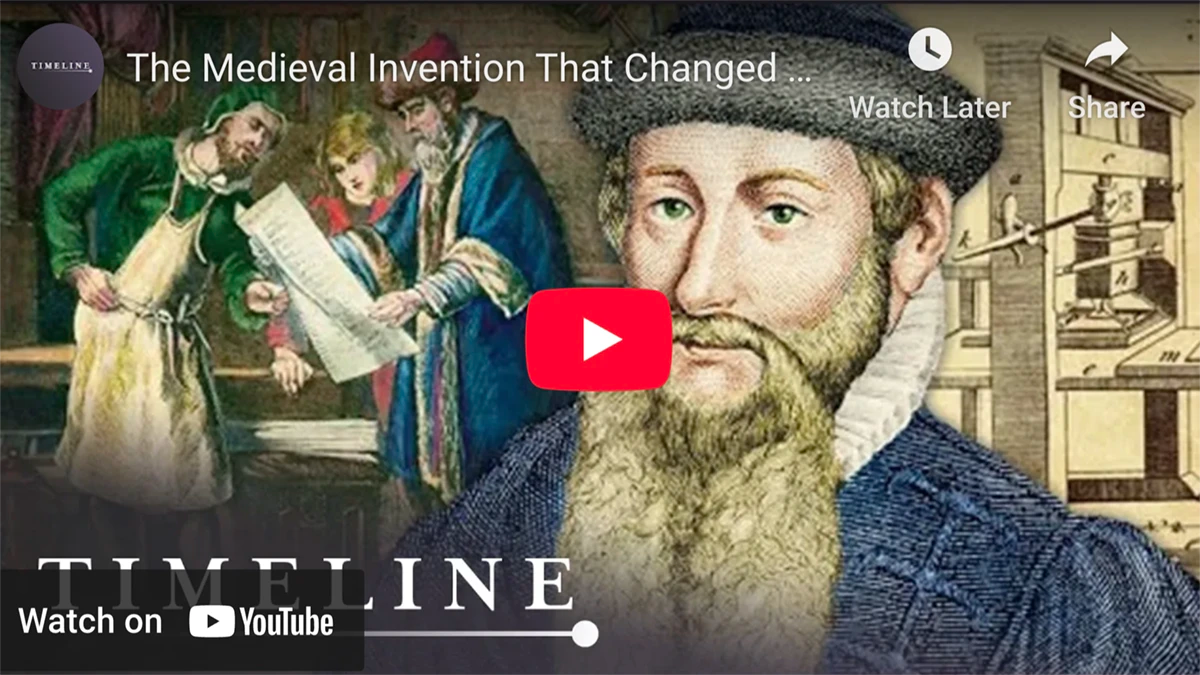 A new force in society, which was inherently a black and white medium. The printing press revolution meant woodcuts and engravings could be reproduced en masse, spreading art and information widely – and almost all of it was monochrome ink on paper.
A new force in society, which was inherently a black and white medium. The printing press revolution meant woodcuts and engravings could be reproduced en masse, spreading art and information widely – and almost all of it was monochrome ink on paper.
Whether it was a broadsheet of Luther’s teachings or a satirical etching lampooning a king, printmakers harnessed the stark clarity of black ink on white paper for impact and propaganda. In XVI-century pamphlets, for example, bold woodcut illustrations in black and white helped fuel the Protestant Reformation by making complex ideas visually accessible to the masses.
One could argue the first media revolution was carried in black and white, the only colors the presses could handle. This gave rise to an aesthetic of high contrast in communication: imagine a 17th-century news gazette, its woodcut of a battle rendered in thick black lines – simple, legible, and dramatic. The necessity of the medium led to a style: images needed to be graphically strong, distilling scenes to their core elements of light and dark.
Artists like Hans Holbein the Younger and William Hogarth later perfected the art of visual satire in engravings, using shadow and light to shape mood and draw the eye to points of irony or emotion. Thus, beyond the fine art studios of da Vinci and Dürer, the wider world was learning the persuasive power of black-and-white art for messaging. From Renaissance Italy’s chiaroscuro to Germany’s printing presses, black and white was becoming the storyteller’s ally – a universal visual language understood across borders and eras.
Shadows of Modernity: Monochrome from Picasso to Malevich
Kazimir Malevich’s Black Square
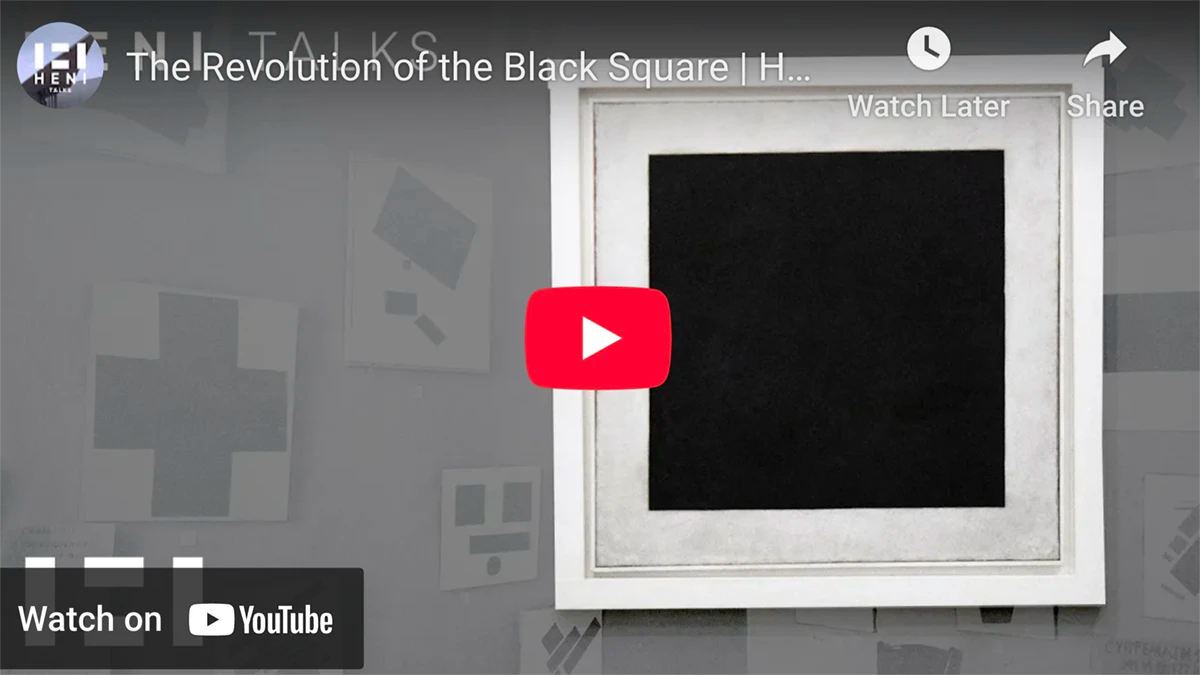 Fast forward to the dawn of the 20th century, and the art world was awash in bold new ideas. In this era of modernism, some artists chose to renounce color entirely as a statement of purity and rebellion. Black and white became avant-garde. Perhaps the most famous example is Kazimir Malevich’s “Black Square” (1915) – that enigmatic, iconic painting of a simple black square on a white field which Malevich hailed as the “zero point of painting”.
Fast forward to the dawn of the 20th century, and the art world was awash in bold new ideas. In this era of modernism, some artists chose to renounce color entirely as a statement of purity and rebellion. Black and white became avant-garde. Perhaps the most famous example is Kazimir Malevich’s “Black Square” (1915) – that enigmatic, iconic painting of a simple black square on a white field which Malevich hailed as the “zero point of painting”.
When it was first exhibited in Petrograd, viewers were shocked, some even angered. Here was a canvas devoid of image or narrative, presenting the ultimate monochrome art: just form and contrast, a bold black square floating on a white background. Malevich intended it as a philosophical turning point. By eliminating all recognizable subject and all color, he aimed to free art from the burden of representation and allow it to exist “as pure feeling.”
This stark painting was more than an artwork; it was a manifesto in paint. Critics and admirers have since read it variously as a symbol of nihilism, a mourning veil for a world in turmoil (it appeared during World War I), or conversely as a mystical icon inviting transcendence beyond the material world.
No matter the interpretation, the impact is undeniable: with one black and white canvas Malevich broke open the door to abstract art. He demonstrated that restricting color could be radically modern, carrying sociopolitical significance too – some saw in Black Square the austere, utopian spirit of the Russian Revolution.
Over a century later, that painting’s void-like presence still challenges us. It stands as proof that a monochrome painting can upend convention and provoke profound thought about what art means.
Picasso's Guernica
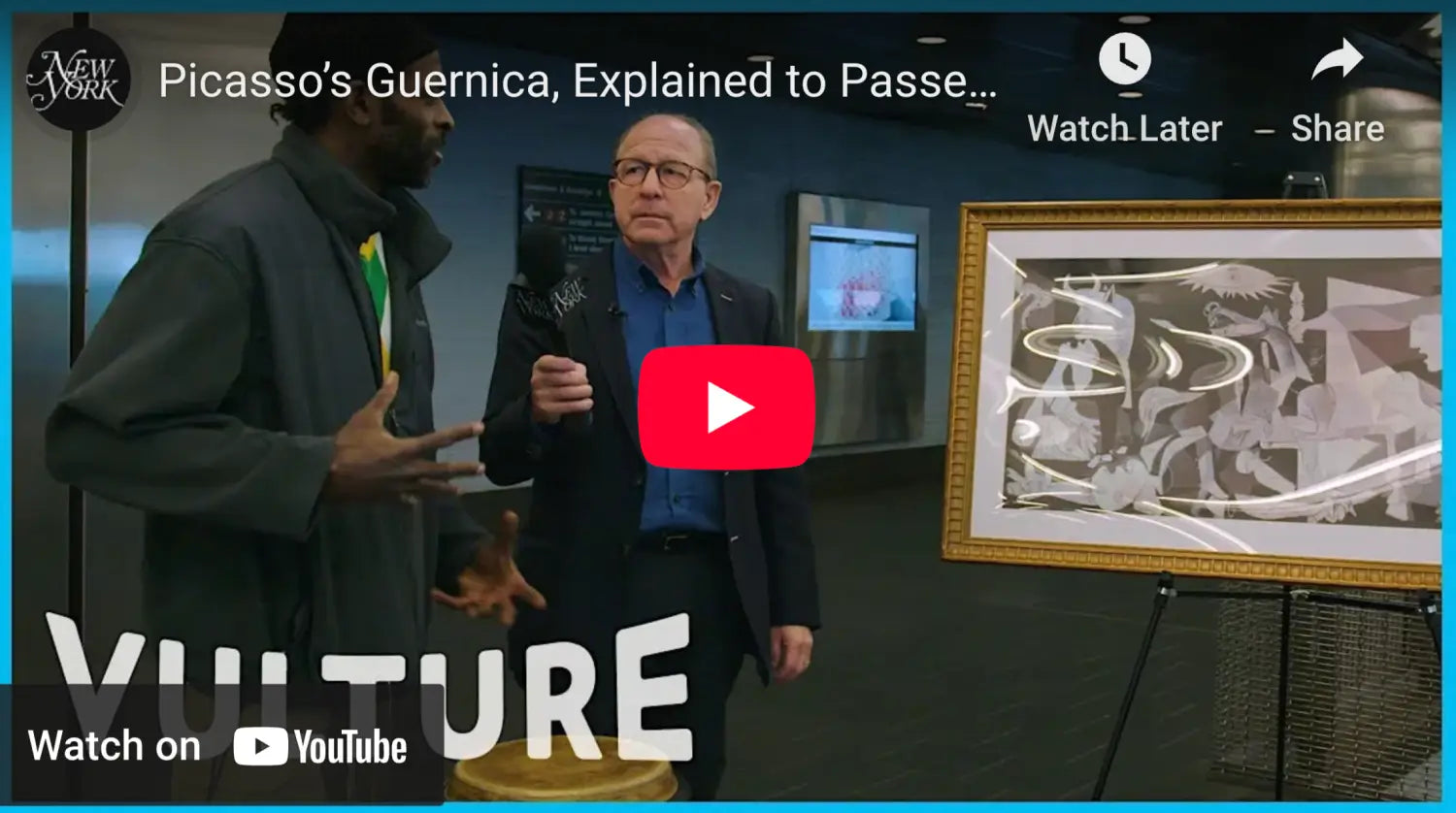 Around the same time, Pablo Picasso was also using black, white, and gray to reinvent art in his own way. The Spanish master is best known for his Cubist deconstructions and vibrant blue and rose periods, but in one of his most powerful works – Guernica (1937) – he turned decisively to grayscale. This mural-sized painting, Picasso’s response to the Nazi bombing of the town of Guernica during the Spanish Civil War, is entirely in black, white, and ash-gray tones.
Around the same time, Pablo Picasso was also using black, white, and gray to reinvent art in his own way. The Spanish master is best known for his Cubist deconstructions and vibrant blue and rose periods, but in one of his most powerful works – Guernica (1937) – he turned decisively to grayscale. This mural-sized painting, Picasso’s response to the Nazi bombing of the town of Guernica during the Spanish Civil War, is entirely in black, white, and ash-gray tones.
Picasso deliberately eliminated color to emphasize the stark tragedy and moral gravity of the scene. The bull, the horse, the weeping women and dying children in Guernica are all rendered in somber monochrome, as if shown under the harsh clarity of a newsreel or photograph.
Picasso understood color might beautify or dilute the horror, whereas black and white would sear it into the viewer’s mind. Indeed, the painting has the feel of an X-ray of human suffering — bones and shades, agony undistracted by any cheerful hue.
Critics at the time noted it looked like a giant newspaper illustration, appropriate for an event that had to be broadcast as a warning to the world. Guernica’s grayscale symbolism is potent: by forgoing color, Picasso aligned the painting with truth-telling media (photographs, print) and perhaps also with the stark moral binaries of war (good versus evil, life versus death). The result is one of the most emotionally powerful anti-war statements in art.
Taking away color did not take away any of the painting’s power; in fact, the black & white artwork highlighted the severity of destruction and despair. To this day, Guernica looms as a testament to how black and white art can carry immense sociopolitical significance – in this case, serving as enduring anti-fascist propaganda and a universal lamentation for innocent lives lost.
While Picasso and Malevich seized monochrome for grand statements, many other modernists also experimented with limited palettes to various ends. In the 1910s and 1920s, the Analytical Cubists (Picasso and Georges Braque) largely drained their canvases of color, painting still lifes in murky browns and grays.
The Cubists
 For the Cubists, black and white was a strategic restriction: by muting color, they could focus on shattering forms and multiple perspectives without the “distraction” of bright hues. The result was a series of paintings that are virtually monochrome – a dozen tones of gray and brown – which force the viewer to consider shape and structure above all.
For the Cubists, black and white was a strategic restriction: by muting color, they could focus on shattering forms and multiple perspectives without the “distraction” of bright hues. The result was a series of paintings that are virtually monochrome – a dozen tones of gray and brown – which force the viewer to consider shape and structure above all.
We might call these works proto-monochrome, serving a similar purpose as earlier grisaille: to accentuate form over ornamental color. In a way, Cubism’s austere palette set the stage for later pure abstraction in black and white.
Mid-20th Century Visions
The late 1940s and 1950s saw the rise of explicit monochrome painting movements. Artists on both sides of the Atlantic created works composed solely of one color or of black-and-white contrasts, pushing abstraction to new extremes. In New York, the Abstract Expressionists embraced high-contrast simplicity to channel raw emotion.
Franz Kline
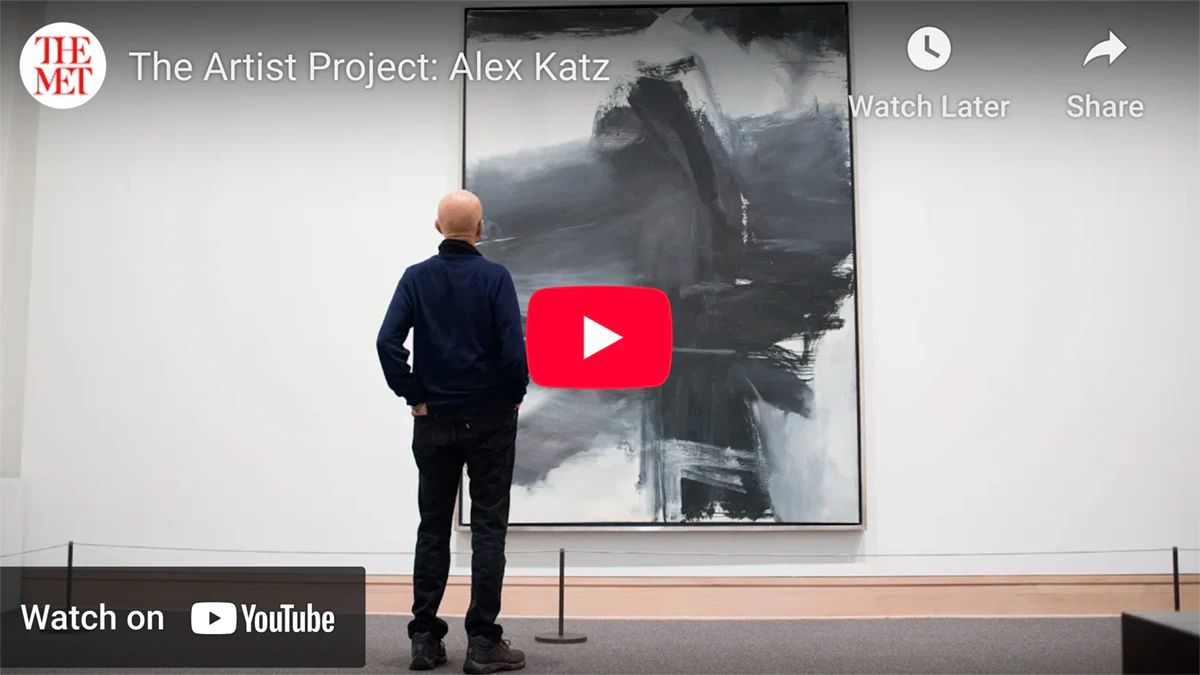 Franz Kline became famous for his monumental black-and-white canvases. With house painter’s brushes (sometimes as broad as sash brushes), he slashed thick black strokes onto white fields, creating abstract compositions that crackle with energy and tension.
Franz Kline became famous for his monumental black-and-white canvases. With house painter’s brushes (sometimes as broad as sash brushes), he slashed thick black strokes onto white fields, creating abstract compositions that crackle with energy and tension.
Kline’s paintings like Chief (1950) or Painting Number 2 (1954) consist of aggressive, jagged black shapes that might suggest bridges, characters, or pure movement, depending on the viewer. He had discovered that the dynamism of pure form in black and white could convey feeling as directly as any color – perhaps even more so.
Stripping art down to stark binaries, Kline invited viewers to respond viscerally to contrast itself. The story goes that Kline hit upon this style after a friend, Willem de Kooning, showed him a projection of one of his small black ink drawings magnified onto a wall.
Seeing the bold simplicity enlarged, Kline realized the potential drama of black on white at a giant scale. The resulting works made him a luminary of Abstract Expressionism, proving that in the age of existential angst, a few bold strokes of black paint could embody the restless spirit of modern man.
Ad Reinhardt
 Enigmatic figures like Ad Reinhardt in the U.S. painted canvases that were almost entirely black, seeking a kind of visual nirvana through total color reduction. Reinhardt’s series of “Black Paintings” (1953–1967) are ostensibly just square canvases painted in near-black hues, yet upon careful looking they reveal subtle cross shapes or grids in slightly lighter shades of black.
Enigmatic figures like Ad Reinhardt in the U.S. painted canvases that were almost entirely black, seeking a kind of visual nirvana through total color reduction. Reinhardt’s series of “Black Paintings” (1953–1967) are ostensibly just square canvases painted in near-black hues, yet upon careful looking they reveal subtle cross shapes or grids in slightly lighter shades of black.
Reinhardt viewed these works as the endgame of painting – pure presence without narrative, “a pure, abstract, non-objective, timeless, spaceless, changeless relation” in his words. He famously quipped, “There is a black which is old and a black which is fresh. Lustrous black and dull black, black in sunlight and black in shadow” – indicating that even within “black” there is variety.
In a sense, Reinhardt was performing a meditative philosophical interpretation of color restriction: by confining himself to one color, he aimed to eliminate all external reference and reach a state of painting as painting, nothing more.
Similarly, artists of the Zero group and monochrome pioneers like Yves Klein (with his International Klein Blue, albeit a color) and Robert Rauschenberg (with his entirely white paintings) were investigating how reducing art to one hue or to black-and-white could become a statement about art itself – about perception, about nothingness and fullness.
Black and White in Tune with the 1960s
 By the 1960s, an exhibition of all-white or all-black canvases hardly raised an eyebrow among the avant-garde; monochrome art had become a movement of its own. Critics at the time wrestled with what it meant: was it a zen-like pursuit of essence, a Dada-like prank, or perhaps a political comment on emptiness in consumer society? Often it was all of these at once.
By the 1960s, an exhibition of all-white or all-black canvases hardly raised an eyebrow among the avant-garde; monochrome art had become a movement of its own. Critics at the time wrestled with what it meant: was it a zen-like pursuit of essence, a Dada-like prank, or perhaps a political comment on emptiness in consumer society? Often it was all of these at once.
The monochrome painting movements challenged audiences to find meaning beyond image and to appreciate subtle qualities of surface, light, and materials. They argued that limitation can breed a different kind of artistry – one of refined attention and conceptual depth. As viewers, we learned to slow down and see the nuances in what at first seems uniform.
A gray painting by Gerhard Richter, for instance, might at first appear as dull as a battleship hull, but then whisper ambiguities of objectivity and emotion. Richter praised grey for its ability to convey “both objectivity and ambiguity”. Similarly, Bridget Riley’s optical illusions in black and white, such as Movement in Squares (1961), show how the absence of color can trick the eye into seeing motion and even phantom colors. Her undulating checkerboards pulsate purely through the magic of alternating black and white squares, proving that color is unnecessary for vibrant optical art.
Collectively, these 20th-century adventures illustrate a powerful truth: over time, artists have repeatedly turned to black-and-white to strip art to its core and make bold statements. It’s a paradox that by removing color—the very element many assume makes art appealing—artists have so often created works of transcendent beauty or provocative force.
As viewers, we respond to the purity, the clarity, and the often poetic metaphors that black and white imagery invites: night and day, good and evil, truth and oblivion. In a world of ever-increasing noise and Technicolor, the monochrome artwork stands apart like a quiet oracle, speaking in the oldest visual language of shadow and light.
Through the Lens: A World Captured in Shades of Gray
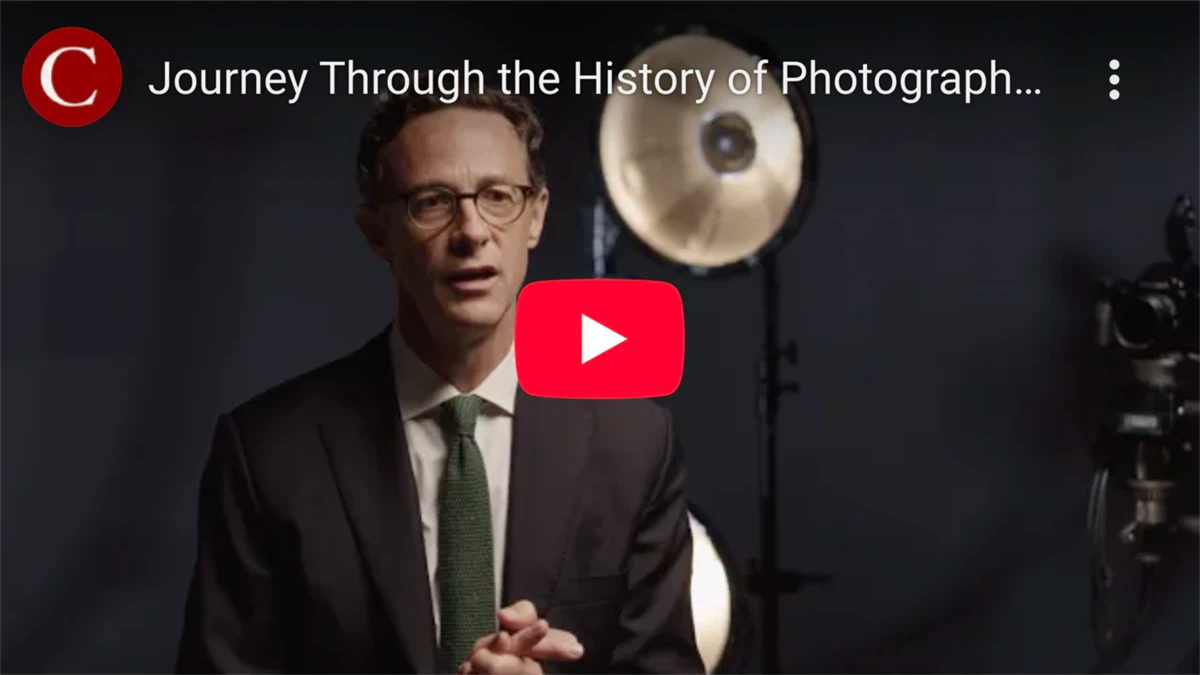 The advent of photography in the 19th century introduced a new medium that was, for its first century, entirely black and white—and it fundamentally changed how humanity records its stories. When Louis Daguerre and Henry Fox Talbot unveiled the first photographic processes in the 1830s and 1840s, the images that emerged were monochromatic out of technical necessity.
The advent of photography in the 19th century introduced a new medium that was, for its first century, entirely black and white—and it fundamentally changed how humanity records its stories. When Louis Daguerre and Henry Fox Talbot unveiled the first photographic processes in the 1830s and 1840s, the images that emerged were monochromatic out of technical necessity.
Daguerreotypes gleamed with silvery gray mirror-like surfaces; Talbot’s paper calotypes bore soft brown-black tones (often called sepia, but essentially a warm black). Thus from its birth, photography was an art of light and shadow, with chemistry translating the visible world into a scale of grays.
This new ability to capture reality’s fleeting moments in black and white utterly entranced the public. By the 1850s, photographic studios across Europe and America were producing black-and-white portraits for the masses, and travelers were documenting far-flung lands in monochrome prints.
People noted a certain “truthfulness” in the black-and-white photograph, perhaps because it seemed unadorned by artifice – a direct imprint of light. Indeed, even after color photography became possible (as early as the late 19th century experimentally), black and white remained synonymous with authenticity and artistic seriousness.
As the noted photographer Robert Frank once said, “Black and white are the colors of photography. To me they symbolize the alternatives of hope and despair to which mankind is forever subjected”. There is something about a black-and-white photograph that can feel more honest, more universal. By stripping away the specific colors of a scene, it’s as if the image gains a symbolic or timeless quality.
Throughout the history of black and white photography, certain moments and masters stand out. In the 20th century, iconic photographers such as Ansel Adams, Henri Cartier-Bresson, and Dorothea Lange took the monochrome medium to new heights.
Ansel Adams
 Working in the American West, Adams shot stunning landscapes of Yosemite and Yellowstone, where every tone from the deepest velvet black of a shadowed pine to the bright white of sunlit snow is carefully calibrated.
Working in the American West, Adams shot stunning landscapes of Yosemite and Yellowstone, where every tone from the deepest velvet black of a shadowed pine to the bright white of sunlit snow is carefully calibrated.
He developed the Zone System to precisely control exposure and contrast, creating photographs like Moonrise, Hernandez, New Mexico (1941) that feel almost three-dimensional in their rich gradations of gray.
In Adams’s prints, the lack of color directs our focus to texture, form, and the sublime play of light in nature’s cathedral.
Henri Cartier-Bresson
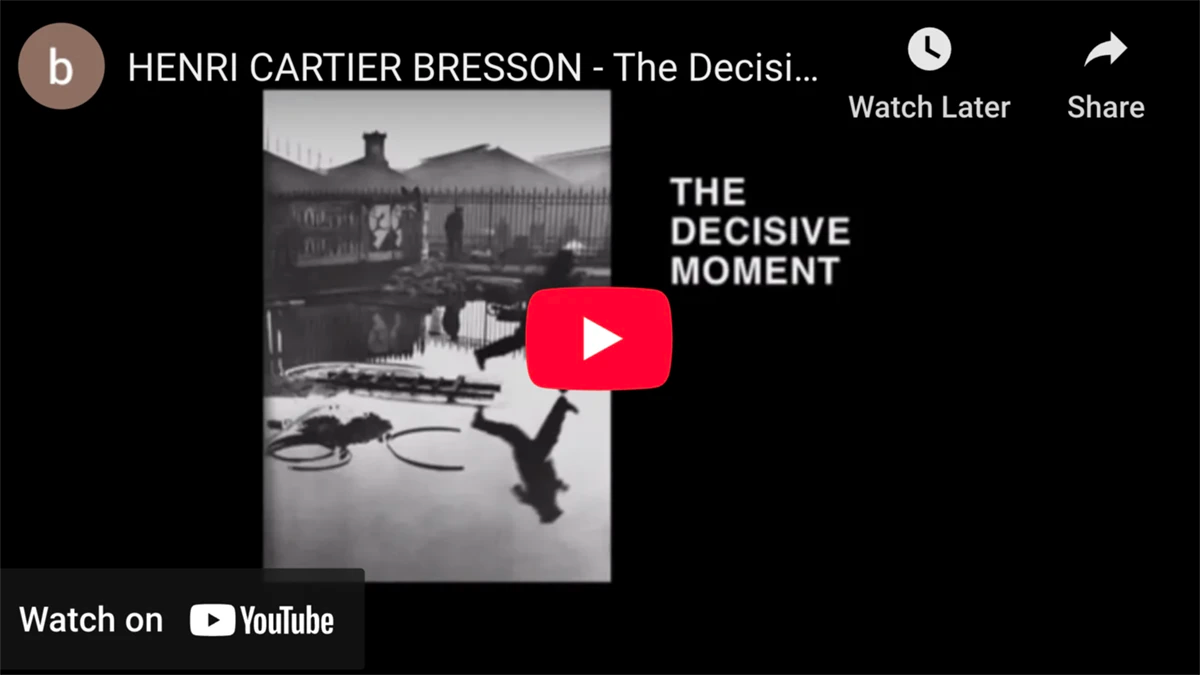 Often called the father of photojournalism, roamed the streets of Paris and beyond with his Leica, capturing the “decisive moment” in luminous black and white. His images—an airborne man reflected in a puddle behind Gare Saint-Lazare, or a joyful crowd on Liberation Day—distill life’s chaos into balanced, elegant compositions of dark and light. Henri believed color would only detract from the geometry and timing of a great candid shot.
Often called the father of photojournalism, roamed the streets of Paris and beyond with his Leica, capturing the “decisive moment” in luminous black and white. His images—an airborne man reflected in a puddle behind Gare Saint-Lazare, or a joyful crowd on Liberation Day—distill life’s chaos into balanced, elegant compositions of dark and light. Henri believed color would only detract from the geometry and timing of a great candid shot.
Dorothea Lange
![]() And then there’s Dorothea Lange, whose documentary photography in black and white during the Great Depression seared the face of suffering into the national conscience. Her Migrant Mother (1936) portrait of a weary pea-picker in California, lines of care etched in exquisite chiaroscuro on her face, became an emblem of resilience amid poverty.
And then there’s Dorothea Lange, whose documentary photography in black and white during the Great Depression seared the face of suffering into the national conscience. Her Migrant Mother (1936) portrait of a weary pea-picker in California, lines of care etched in exquisite chiaroscuro on her face, became an emblem of resilience amid poverty.
The fact Lange's work is in black and white is integral to its impact: it looks real, indisputable—like evidence and empathy combined on film. Lange’s photographs (taken for the Farm Security Administration) were often used in newspapers and reports; had they been in color, they might have been seen as too artistic or “beautiful.”
In austere greyscale, Lange's work read as truthful and urgent. Through her work, we see how photographers used black and white to convey authenticity, emotion, and form without the potential sentimentality of color.
Alfred Stieglitz
 Alfred Stieglitz reshaped black-and-white photography by amplifying everyday moments into powerful symbols of modern life. In works like The Steerage, he wove together social class distinctions, questions of identity, and the subtle geometry of shipboard architecture, forging a boldly modern visual language.
Alfred Stieglitz reshaped black-and-white photography by amplifying everyday moments into powerful symbols of modern life. In works like The Steerage, he wove together social class distinctions, questions of identity, and the subtle geometry of shipboard architecture, forging a boldly modern visual language.
His swirling cityscapes of winter skies and crowded streets carried an undercurrent of sociohistorical tension, echoing the rise of industrialization and the magnetic pull of urban living. Stieglitz further cemented photography’s legitimacy through his advocacy and curation, demonstrating that prints developed under careful hands could rival paintings for emotional depth and tonal richness.
His portraits—especially of his wife, Georgia O’Keeffe—revealed a merging of personal devotion and cultural critique, showcasing the transformative possibility of photography beyond mere documentation. In capturing both monumental societal shifts and intimate psychological truths, Stieglitz exposed black-and-white photography as a vital force in interpreting the complexities of the modern world.
Black and White Photography After Kodachrome
Even after color film became widely available (by the Kodachrome revolution of the 1930s and especially post-WWII), many great photographers stuck firmly to black and white, either out of preference or for the sake of artistry.
Mid-century photojournalism remained largely monochrome because newspapers and magazines mostly printed in black and white. Iconic images of the 20th century—the flag-raising at Iwo Jima in 1945, Neil Armstrong on the Moon in 1969 (captured on black-and-white TV cameras), the tear-gassed protester in the Vietnam War—reached the public imagination in grainy black and white long after color cinema arrived.
Propaganda and Political Messaging
 Think of the bold USSR posters of the 1920s, often just black, white, and a single accent color—red, mostly. Simplifying complex messages into stark symbolic imagery. Or recall the Civil Rights Movement in the US: photos of Martin Luther King Jr. marching in Selma or being arrested in Birmingham are monochrome in the archives of history, giving them a gravitas that transcends time and place. Black and white visuals helped shape public perception, lending seriousness and weight.
Think of the bold USSR posters of the 1920s, often just black, white, and a single accent color—red, mostly. Simplifying complex messages into stark symbolic imagery. Or recall the Civil Rights Movement in the US: photos of Martin Luther King Jr. marching in Selma or being arrested in Birmingham are monochrome in the archives of history, giving them a gravitas that transcends time and place. Black and white visuals helped shape public perception, lending seriousness and weight.
It’s no coincidence that even today, when a magazine or website wants to signal that a photo is important, historical, or deeply artful, they will often present it in black and white (even if it was originally shot in color). Credibility's still seen better in black and white.
Fine Art Fascination
 Black and white photography developed its own rich aesthetic and movements. The mid-20th century saw what’s sometimes called the golden age of black & white photography. Street photography boomed, with figures like Brassaï capturing Paris at night in velvety blacks, and Diane Arbus framing society’s outsiders in grainy, high-contrast scenes that force us to confront raw humanity.
Black and white photography developed its own rich aesthetic and movements. The mid-20th century saw what’s sometimes called the golden age of black & white photography. Street photography boomed, with figures like Brassaï capturing Paris at night in velvety blacks, and Diane Arbus framing society’s outsiders in grainy, high-contrast scenes that force us to confront raw humanity.
Abstract Expressionism had a parallel in photography with practitioners like Aaron Siskind, who photographed peeling paint and graffiti, essentially creating abstract art out of real-world textures in black and white. By the 1970s and ’80s, even as color photography gained art-world acceptance, many artists deliberately chose black and white for specific projects.
Richard Avedon’s stark white-background portraits of American westerners, or Sebastião Salgado’s epic documentation of workers and environmental destruction around the globe. Salgado’s contemporary epics (Workers, Exodus, Genesis) are shot on rich black-and-white film, lending them a timeless, almost biblical quality even when depicting modern subjects. It’s as if to say: these struggles and triumphs are outside of time and culture, part of the human condition itself, depicted in universal monochrome.
Likewise, in photographing her children and the Southern landscape, Sally Mann used antique large-format cameras and black-and-white film to tap into memory and myth.
While Michael Kenna, known for minimalist long exposures of landscapes, prints only in black and white, distilling places to ethereal essences of light and dark.
The Personal is Political
 There is also a sociopolitical aspect to black and white — used to depoliticize color or race, or conversely to highlight those concepts through metaphor. Some contemporary artists use the literal contrast of black and white to comment on racial binaries and histories.
There is also a sociopolitical aspect to black and white — used to depoliticize color or race, or conversely to highlight those concepts through metaphor. Some contemporary artists use the literal contrast of black and white to comment on racial binaries and histories.
American artist Glenn Ligon creates text-based paintings in black paint on white canvas (and vice versa) that layer quotes about race until they become illegible black masses – a powerful metaphor in two tones.
In a more playful vein, Cuban-American artist Carmen Herrera, who only gained wide recognition in her 90s, painted razor-sharp abstract shapes, often in black and white, exploring symmetry and contrast as her primary subject.
The enduring legacy of black and white photography and art lies in its ability to simplify and amplify. By removing color, an artist or photographer unburdens the image of one layer of “reality,” allowing other truths to shine through. Form, emotion, composition, symbolism – these come forward in the absence of chromatic distraction.
By eliminating the distraction of colour, the photographer can direct the viewer’s attention to the most fundamental elements of the image. The same is true in painting and drawing. Black and white asks us to see differently, to notice nuance in texture and tone we might otherwise overlook.
Monochrome's a timeless aesthetic precisely because it is elemental. The world as we experience it is in color, but the world as we remember, as we dream, or as we analyze it—so often, that is in shades of gray. Monochrome speaks to our memories (think of old family photos), to our sense of history, and to our intellectual desire for clarity.
Symbolism, Soul, and the Poetry of Monochrome
 Why does black-and-white art move us so? Part of the answer lies in the rich sociocultural symbolism of black and white colors themselves. Across different cultures, black and white carry heavy, and often opposite, meanings. In much of the West, white has long stood for purity, innocence, and light—weddings feature the white dress, babies are baptized in white—while black represents death, mourning, the unknown of night.
Why does black-and-white art move us so? Part of the answer lies in the rich sociocultural symbolism of black and white colors themselves. Across different cultures, black and white carry heavy, and often opposite, meanings. In much of the West, white has long stood for purity, innocence, and light—weddings feature the white dress, babies are baptized in white—while black represents death, mourning, the unknown of night.
In East Asian traditions, some of these associations reverse or diverge: for example, in many East Asian cultures, white is the color of death and funerals (symbolizing the afterlife or nothingness), whereas black can denote richness and health (think of the black hair that is a sign of vitality).
The contrast of black and white often symbolizes duality or opposing forces—yin and yang in Chinese philosophy, the balance of feminine and masculine cosmic principles, is famously depicted as black and white teardrops nestled together. Artists have leveraged these ingrained meanings. Throughout history, celebrated artists have used black and white to accentuate contrasting ideas and represent dual realities.
Renaissance Artists
Renaissance artists might show the struggle between good and evil through light and shadow falling on a face; a contemporary installation artist might flood a room with yellow light that removes color from viewers’ vision entirely, effectively turning them into living black-and-white images to explore ideas of perception (as Olafur Eliasson did with Room for One Colour in 1997).
Truth, Metaphor, Abstraction
 Philosophical interpretations of color restriction abound: some say black and white suggest the absolutes of truth (black-and-white thinking as a metaphor for clarity or for rigidity), others say they invite ambiguity (after all, a photo’s shades of gray can be interpreted, whereas a red will always shout “red!” at you).
Philosophical interpretations of color restriction abound: some say black and white suggest the absolutes of truth (black-and-white thinking as a metaphor for clarity or for rigidity), others say they invite ambiguity (after all, a photo’s shades of gray can be interpreted, whereas a red will always shout “red!” at you).
Artists have often personified black and white in metaphor. Black is the ink, white the page: together they are language. In countless drawings and prints, the white of the paper is as active a player as the black lines, defining highlights, shaping silhouettes (consider M.C. Escher’s interlocking black-and-white worlds, where figure and ground dance inextricably.
Some artworks make this relationship explicit: the negative space in black and white abstract painting can be just as meaningful as the positive. Franz Kline knew the white gaps were as vital as his strokes – they were “void spaces to represent one of the two” and he chose either to let the canvas show through or to paint the white portions as well, carefully controlling the balance.
In Kline’s Chief, notably, he painted the white, not relying only on raw canvas, indicating a deliberate shaping of both darkness and light. This interplay has a poetic resonance: black and white depend on each other. As the artist El Lissitzky once wrote, “The white plane represents silence, the black plane speech.” Without one, the other loses context.
Ultimately, the enduring appeal of black and white in art may come from its universal metaphorical power. Light and dark are more than visual phenomena; they are primal symbols embedded in human consciousness. Every culture has myths and idioms about light overcoming darkness.
By working in black and white, artists plug directly into that deep well of meaning. A monochrome image can feel archetypal, like a collective dream or memory. It’s no accident that when we recall things in memory, we often simplify them – sometimes even imagining past eras “in black and white” (perhaps influenced by old photos and films).
Black-and-white art, especially when done with poetic intention, can feel like memory made visible or like a myth carved out of shadow. And of course, beyond all these weighty interpretations, there is simply the visual poetry of black and white: the way a sweeping shadow can create a composition as elegant as a piano’s keys, the way a face half in light, half in dark can suggest inner conflict, the way alternating stripes of black and white can dazzle the eye.
Monochrome invites striking metaphors in description: writers compare black and white images to chessboards of emotion, to thunderstorms of the soul, to silent music – and indeed, looking at a great black-and-white artwork can feel like listening to a symphony in which all the notes belong to one instrument, yet the melody and passion still come through loud and clear.
Spiritual Contemplation
 Many religious art traditions have utilized it when color might overwhelm the pious message. In Islamic calligraphy, sacred verses are most often rendered in black ink on white paper – the word is paramount, unadorned by pictorial distraction or color.
Many religious art traditions have utilized it when color might overwhelm the pious message. In Islamic calligraphy, sacred verses are most often rendered in black ink on white paper – the word is paramount, unadorned by pictorial distraction or color.
The Zen Buddhist ink wash paintings of Japan and China use black ink (which can be diluted to many grays) on white silk or paper, aiming to capture the essence of a landscape or a figure’s spirit with as few strokes as possible. These works are meditative both in creation and effect; they align with the Zen ideal that great truth lies in simplicity. The restraint of monochrome becomes a spiritual exercise.
The Harlem Renaissance
 In the 1920s and ’30s, during the Harlem Renaissance, black and white media (from ink drawings to photography) were crucial for African American artists to assert a new narrative. Magazines like The Crisis and Opportunity featured bold black-and-white illustrations – often silhouettes or stylized figures – by artists such as Aaron Douglas, whose work used contrasts to portray Black history and spirituals. These limited-color images packed a graphic punch and also metaphorically resonated: black and white on the page speaking to the reality of Black and white in society.
In the 1920s and ’30s, during the Harlem Renaissance, black and white media (from ink drawings to photography) were crucial for African American artists to assert a new narrative. Magazines like The Crisis and Opportunity featured bold black-and-white illustrations – often silhouettes or stylized figures – by artists such as Aaron Douglas, whose work used contrasts to portray Black history and spirituals. These limited-color images packed a graphic punch and also metaphorically resonated: black and white on the page speaking to the reality of Black and white in society.
According to art historians, artists of the Harlem Renaissance deliberately harnessed monochrome schemes to “transcend the limitations of color” and dig deeper into themes of racial identity and inequality. The absence of color in their works allowed for a focus on form and message—confronting racial injustice in straightforward, uncompromising terms.
A century later, their legacy is seen in how black-and-white photography was used during the Civil Rights era (think of all those crucial images of protests, which were in newspapers in black and white) and continues in the oeuvre of contemporary Black photographers like Daido Moriyama or even in the stark black-and-white portraiture of artists like Kehinde Wiley (when he photographs subjects as studies before painting them in color).
The sociopolitical significance of black and white art is a thread connecting ages: whether it’s medieval monks on monochrome parchment, revolutionaries in monochrome prints, or activists in monochrome photographs, the restricted palette often implies an urgent, essential communication.
Black and white has been the language of proclamations, whether in broadsides, propaganda posters, or protest art. Its high contrast grabs attention, its relative abstraction from reality (since we see the world in color) lends gravitas, and its clarity aids legibility of both text and form.
The Enduring Allure of Monochrome: A Timeless Journey
 From the coal-streaked walls of prehistoric caves to the glowing screens of our smartphones displaying a classic Ansel Adams print, the journey of black and white art spans tens of thousands of years. Throughout this deep time, artists have returned again and again to the elemental pairing of dark and light, finding in it a wellspring of innovation, expression, and meaning. What began as a necessity—charcoal and ash being the simplest media—became a conscious artistic choice loaded with significance.
From the coal-streaked walls of prehistoric caves to the glowing screens of our smartphones displaying a classic Ansel Adams print, the journey of black and white art spans tens of thousands of years. Throughout this deep time, artists have returned again and again to the elemental pairing of dark and light, finding in it a wellspring of innovation, expression, and meaning. What began as a necessity—charcoal and ash being the simplest media—became a conscious artistic choice loaded with significance.
Evolution of Monochrome Art
It's not a linear chronology but a rich, looping narrative, a kind of fugue that revisits core themes in new variations across eras. We’ve seen how Renaissance masters used it to explore form and spiritual truth, how modernists wielded it to break conventions and shout protest, and how photographers made it the very definition of their craft.
Yet, despite the advent of every technological color advance, black and white endures, even thrives. Why? Perhaps because, paradoxically, limiting art’s palette to black and white often expands its impact. The starkness can be more striking; the simplicity, more sublime. Black-and-white artworks sharpen our perception and focus our attention, much like stepping out of a noisy room into a quiet moonlit night can heighten the senses.
In Our Contemporary Moment
Artists continue to push monochrome boundaries. Some, like the acclaimed photographer Hiroshi Sugimoto, deliberately use antiquated B&W film to shoot modern skyscrapers or seascapes, creating images that seem outside of time. Others, like minimalist painter Vantablack explore just how black black can be – making sculptural voids that absorb 99% of light, effectively turning shape into silhouette in space. And Anish Kapoor famously acquired exclusive rights to the “blackest black” pigment known.
In digital art, designers often opt for black-and-white schemes to convey elegance or retro chic, knowing those two tones carry a high-impact visual punch and timeless quality for viewers and search engines alike.
Look around and you’ll notice black-and-white imagery everywhere: in advertising (think of luxury ads often shot in B&W to suggest class and clarity), in graphic design (the logos of many top brands are monochrome, from Nike’s swoosh to Apple’s apple – minimalist black and white designs that are instantly recognizable.
In an age where color saturation is at an all-time high – where digital displays can show billions of hues – the restraint of black and white still captivates artists and audiences. It offers a refuge of simplicity and a canvas for the imagination. The viewer is invited to project their own colors in mind, or to relish the purity of form free from chromatic cues.
In Visual Arts Institutions
Retrospectives of great photographers or printmakers remain ever-popular. Even cinema periodically returns to black and white for artistic effect – from Schindler’s List to The Artist – reminding us that sometimes color is actually surplus to storytelling.
Black and white art has proven enduring because it is at once modern and ancient, straightforward and mysterious. It communicates on a direct visual level (anyone from any culture can grasp an image in black and white) and on a deep symbolic level. It allows the creator’s hand – whether the stroke of a pen or the click of a shutter – to come forward.
All art is illusion, abstractions of reality, by removing one layer of verisimilitude (color). Ironically, it often makes the depicted scene feel more real or profound. Just as a poem distills language to an essence, a monochrome artwork distills visual experience to line, shape, light, shadow – the essence of vision.
And the Continuity?
In the chiaroscuro of a Renaissance painting or the gelatin silver tones of a classic photograph, one can sense a continuity. We stand in a gallery or gaze at a page, and we feel connected to that first cave artist drawing a mammoth by firelight. The tools have changed and the intentions varied, but the fundamental creative act – making marks or images to capture something true about life, using darkness and light – remains. The great critic John Berger once observed that photography’s genius was in “quoting” the visible world in a new way. In black and white, that quote becomes a kind of poetry. Likewise, every painting or print in monochrome seems to speak to us in a universal tongue.
There is a narrative thread, a certain drama, that monochrome carries through time. It’s the drama of endurance (these images feel enduring, etched in memory), the drama of contrast (the eye energized by opposition), and the drama of essence (getting to the heart of things).
Consider the metaphor that black and white are like the keys of a piano: with only these two “colors” an infinite range of music can be made. Artists over the ages have composed visual symphonies with them – from the ancient monochrome symbols chiselled in stone, to the Renaissance chiaroscuro masterpieces that taught us to see light anew, to the modern monochrome abstractions that challenged our preconceptions, and the timeless black and white photographs that have documented our joys and sorrows. The melody of black and white art continues, ever rich and ever varied.
As long as artists seek to distill vision to its fundamentals and viewers seek images that speak to the soul, we will find ourselves returning to that elegant, eternal duet of shadow and light. Black-and-white art is not merely a style or the lack of color – it is a masterful art form in its own right, a testament to the power of simplicity and the enduring charisma of contrast.
In the chiaroscuro of history, black and white stand as immortal twin muses, forever guiding humanity’s hand in creating images that move the heart and mind. In art, as in life, everything begins with darkness and light – and the story they tell together will always be one of the most compelling tales we know.
...














